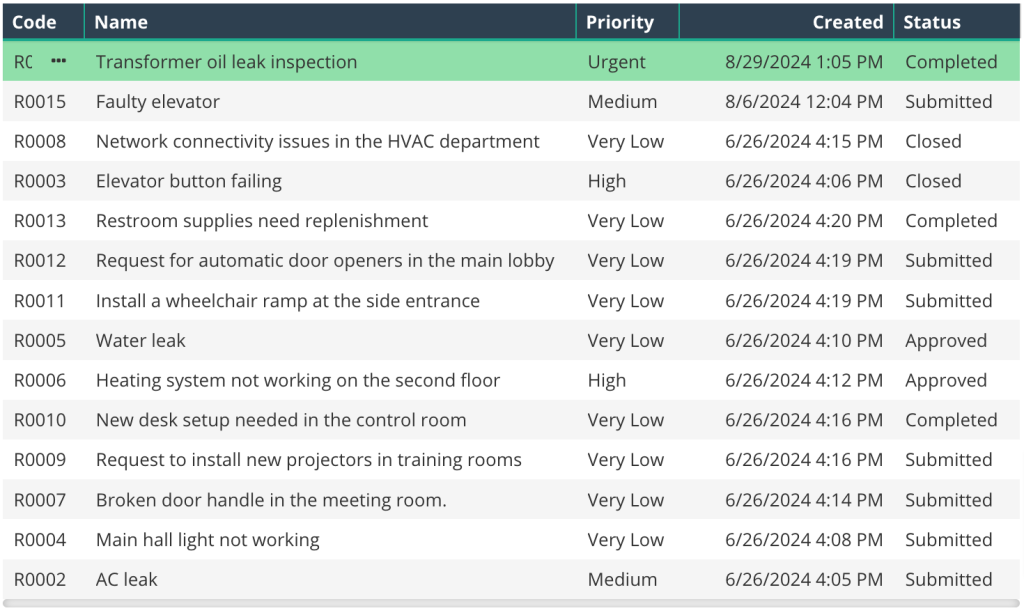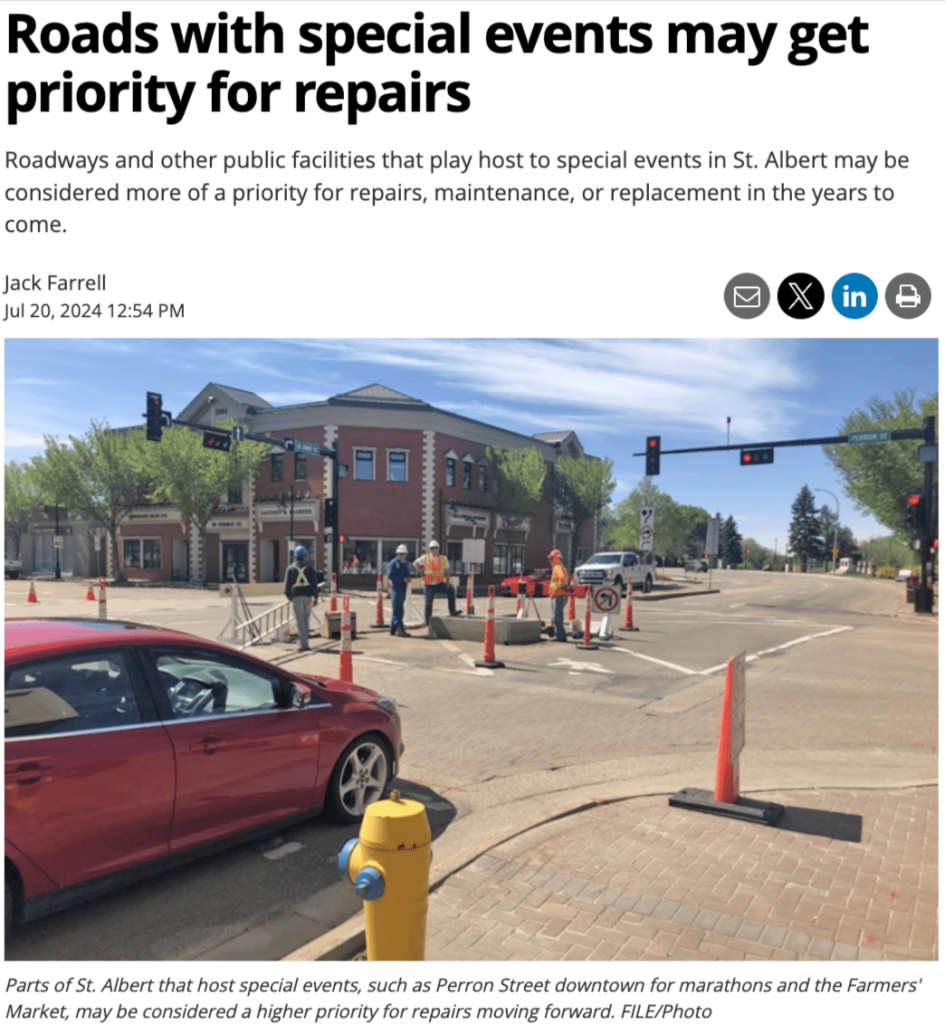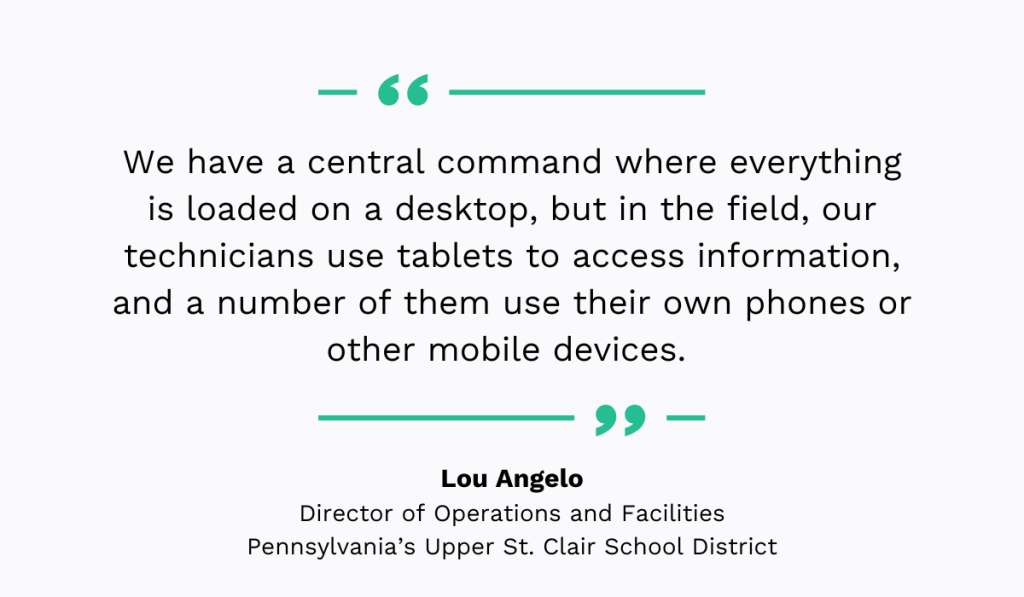Get a Free WorkTrek Demo
Let's show you how WorkTrek can help you optimize your maintenance operation.
Try for freeKey Takeaways
- Organizations risk incomplete submissions and waste valuable time without a standardized work request submission process.
- CMMS solutions capture all relevant details for each stage of the work request lifecycle, streamlining communication and speeding up issue resolution.
- Setting clear SLA response times keeps maintenance teams accountable and helps prevent conflicts.
With an optimized work request process, maintenance becomes a strategic advantage rather than a reactive measure, setting an organization apart in terms of operational resilience and efficiency.
We’ve created this guide to help you streamline your work request handling process.
We’ll guide you through each phase, introduce helpful tools, and explain why each step is essential.
By the end of this guide, you’ll have everything you need to take your work request procedures and maintenance strategy to a whole new level.
Standardize Work Request Submissions
Standardizing work request submissions ensures a consistent, efficient, and transparent process every time.
As a result, the likelihood of incomplete submissions and back-and-forth clarifications is significantly reduced, making it easier for maintenance personnel to follow up.
They know this very well at the 558th Aircraft Maintenance Squadron in the Warner Robins Air Logistics Complex.
Each aircraft repair document, mainly Maintenance Work Requests (MWRs), is carefully managed due to their significant impact on maintenance planning.
Robert Hall, the Chief of the 558th Aircraft Maintenance Squadron Planning Flight, elaborates:
[Strategic maintenance planning] involves making sure that all the Air Force Sustainment Center engineering requests are completed and planned by disposition instructions given. We approve MWRs ensuring they are written correctly; all technical data is correct and all codes are correct on the document.
And the results of this meticulousness are more than satisfactory, he says:
Last year we approved over 10,000 MWRs and reviewed 40-plus workload offers for new workload or incoming unplanned depot-level maintenance requirements. We had zero quality assurance findings for that year.
Work requests aren’t just paperwork but a foundation for more effective asset and facility maintenance.
However, this is true only if the submission procedure is well-defined.
Systemize the submission protocols to improve your work request and maintenance process. This includes determining:
- who can submit requests
- who reviews/approves them
- what information to include in a request
- how to submit requests (email, paper form, or a digital platform)
- where to check request status
Outlining what information each request should include is particularly important.
This is what maintenance teams need the most to do their jobs.
A standardized template, like the one below, is the most effective.

It covers all the essentials, such as the requester’s name, problem description, due date, the asset in question, and priority level.
This way, you can easily capture the vital details without creating too much work for the requester.
This is exactly how an effective work request submission process should function.
Keep Work Requests Organized Using CMMS
After work requests are submitted, keeping them organized makes it easier for all stakeholders to document, track, and manage each request.
There’s no better tool than a computerized maintenance management system (CMMS).
CMMS solutions are designed to manage the entire work request lifecycle—from submission to resolution—capturing every detail and creating a single source of truth.
This is perfect for any organization with complex upkeep needs, such as Barnard College of Columbia University.
They have numerous work requests coming in daily for various facilities, such as dormitories, athletic centers, computing labs, and biomedical laboratories.
However, as one of their professors explains, CMMS stores all the upkeep data, including requests, in one place.
This makes maintenance far more manageable.
Traditional methods like paper forms or emails simply lack this capability.
With those less effective systems, work requests often need to be more organized, slowing response times and increasing costly downtime.
Take it from Danielle Rivers, Business Services Manager at the real estate company Camden Property Trust.
She experienced the limitations of a paper-based work request system firsthand:
Back when we were using paper service request forms, our techs were losing 15 minutes just going to the office to get what they needed to get jobs started. They had to print the request forms and collect the keys necessary to get into those units. Then they had to walk back to the units to get the work done. Then it was back to the office again to print more request forms and gather more keys, and those forms had to be completed, and the manager had the job of closing out the tickets.
With a CMMS like our WorkTrek, all these inefficiencies are eliminated.
Each request is captured the moment it’s submitted and displayed in an easy-to-navigate table, like the one you see below.

You can quickly adjust your view, sorting and filtering requests by criteria such as completion dates or requester names, making it easy to find exactly what you need.
Essentially, WorkTrek enables you to approve or resolve requests and monitor their progress from start to finish in one centralized system accessible from anywhere.
It’s finally time to say goodbye to scattered files and hello to seamless, efficient work request management.

Properly Prioritize Work Requests
Setting up clear criteria for categorizing maintenance requests by urgency ensures issues are addressed in proper order rather than on a first-come, first-served basis.
That means critical issues get tackled first while less pressing ones wait their turn.
Prioritizing requests is crucial because maintenance can become chaotic without an effective system, leading to unplanned downtime, safety risks, and other complications.
Just look at what happened at Southern Illinois University.
Cockroaches infested dorm rooms during the winter break, and while requests were put in, the response was delayed, leaving students frustrated and unable to sleep in their dorms.

Jim Hunsaker, their Senior Associate Director of Housing Operations, argued that there were no issues on their end and that there was an effective prioritization system in place:
For instance, a leaking shower or a sink that won’t turn off or any type of leak should be reported immediately, so we can take care of that. Otherwise, through the housing portal, a student will submit a maintenance request. If it’s bug issues or other non-emergency issues, we will prioritize those and take care of those as soon as we possibly can.
However, it seems like this system isn’t compelling enough.
In a small survey conducted by the Daily Egyptian, 88.1% of the students living in the dorms reported maintenance issues in their dorms.
This indicated a significant maintenance backlog, possibly caused by a lack of proper work request prioritization.
There isn’t a universal set of criteria for effective work request prioritization.
Some of the most common factors are asset criticality, maintenance complexity, and safety risks, but ultimately, each organization must develop its metrics.
For example, in St. Albert, Alberta, Canada, Coun. Mike Killick proposed adding “social value” as a priority factor for the city’s maintenance plan.
His proposal followed the council’s choice to delay repaving of St. Vital Avenue hill, despite its importance for events like the annual Soap Box Derby.

As you can see, there’s no limit to how versatile these criteria can get.
Nevertheless, avoid getting overwhelmed right from the get-go.
Instead, start simple, maybe with four levels of priority shown below.

From there, you can refine your criteria as needed.
A key point to remember is that not all work requests are created equal, and they should not be treated that way.
Therefore, the more time you invest in setting these criteria, the smoother your operations will run.
Enable Real-Time Request Tracking
Real-time request tracking benefits everyone, from the requesters to maintenance personnel and managers.
It enables requesters to quickly check the status of their requests, while upkeep staff can access instructions at any point, helping them complete tasks without confusion or delays.
It’s hands-down the best way to keep everybody in the loop and avoid those time-draining follow-up calls and emails.
Many organizations, like The Upper St. Clair School District in Pennsylvania, use a cloud-based CMMS to unlock real-time work request monitoring.
Lou Angelo, district Director of Operations and Facilities, explains that this system allows workers to access all the data they need on their mobile devices.
Many modern CMMS solutions offer mobile apps, making real-time tracking even more accessible.
Instead of tying users to a computer in the office, they let them view or submit work requests from anywhere as long as they have internet access.

Some CMMS solutions go further by automatically notifying users of request updates.
These updates can be triggered when a request is approved, closed, completed, or rejected, reducing the need for additional texts and calls to confirm statuses.
The bottom line is this: If you want to keep all the stakeholders updated with the latest information, consider implementing CMMS.
This tool is tough to beat when providing access to the freshest data possible.
Define Clear SLA Response Times
A Service Level Agreement (SLA) response time specifies the timeframe within which the upkeep provider should acknowledge or begin addressing a work request.
Clearly defining this criterion for different request types is an absolute must.
It helps establish expectations, reduces conflicts and misunderstandings, and holds maintenance teams accountable to meet agreed standards.
That’s why websites for government agencies, universities, or other organizations often showcase their maintenance response times.
For instance, the response times for Transform Housing, an organization that offers housing to homeless individuals, are below.

You’ll also notice that response times are typically aligned with the priority level of the issue: urgent issues get addressed sooner, while routine repairs take somewhat longer.
Rosanna Fischer, Vice President of KDM Management Inc., a company helping condominium corporations with day-to-day operations, provides some benchmarks in property management.
To define your SLA response times, refer to the priority matrix you created earlier as a foundation for your decision-making.

Once you’ve defined them, tracking compliance is simple using CMMS.
Since the system records when each request is submitted and resolved, it’s easy to spot any instances of noncompliance.
Plus, with CMMS reporting features, you can pull a complete summary of overdue requests for any period, like the example below.

If overdue requests are frequent, it may signal a need to reevaluate your response times or even examine your work request process for other inefficiencies.
Let’s take a look at how to approach that.
Track Maintenance Work Request KPIs
Regularly monitoring and analyzing work request KPIs is crucial for identifying bottlenecks and areas for process improvement.
Over time, this can improve your maintenance efforts as a whole.
Think about it. If you’re not tracking the efficiency of your work request process, small inefficiencies can slip by, quietly building into larger issues that can disrupt the entire upkeep cycle.
For example, if your team consistently responds slowly to repair requests and nobody monitors them closely, requests will eventually pile up.
This backlog will prolong maintenance issues, leading to all sorts of problems, from safety issues to delays.
Take it from the San Antonio Independent School District (SAISD).
Some schools within the district experienced critical failures of air conditioning systems, sometimes even forcing teachers to send students home due to excessive heat.

Despite the problem occurring amid a heat wave, the schools couldn’t resolve it on time, so some had to shut down.
The cause of this slow response was poor handling of work requests.
SAISD records showed 4,765 open work orders across district buildings, with 1,725 related to heating and cooling repairs.
District officials noted these numbers were somewhat inflated by duplicate requests but acknowledged the need for a better work request/order system to manage repairs more effectively:
We are working to reduce the number of duplicate work orders in the system, which can happen when multiple requests are made by multiple people. […] We are moving toward a priority system with our work orders. We address the highest priority work orders first, such as requests made to mitigate HVAC or safety issues. Later this fall, we will be transitioning to a new work order system with improved analytics.
This is a powerful reminder of why monitoring the work request process is so important.
If SAISD had kept a closer eye on theirs, they could have flagged issues earlier, implemented an adequate prioritization system, and avoided a backlog that disrupted their schools.
Granted, tracking KPIs won’t magically erase all inefficiencies, but it will help you spot trouble before it escalates.
So, to get started, focus on a few key KPIs, like:
- number of service requests in the backlog (open requests)
- percentage of service requests completed on time
- total number of completed service requests
- average service request response time
- customer satisfaction rating
Tracking these metrics keeps you in control of your processes, providing the insights needed to address issues proactively.
You won’t have to put out fires constantly but enjoy a smooth, disruption-free work request process.
Conclusion
You can expect significant improvements across your operations by streamlining this essential part of maintenance management.
You can expect shorter wait times between identifying and resolving issues.
As a result, your organization will experience reduced equipment downtime, smoother workflows, and fewer operational delays.
This is a massive win for your overall productivity.
Work request management affects your entire maintenance lifecycle.
Therefore, investing in this area means investing in the better reliability and efficiency of your assets and facilities.












